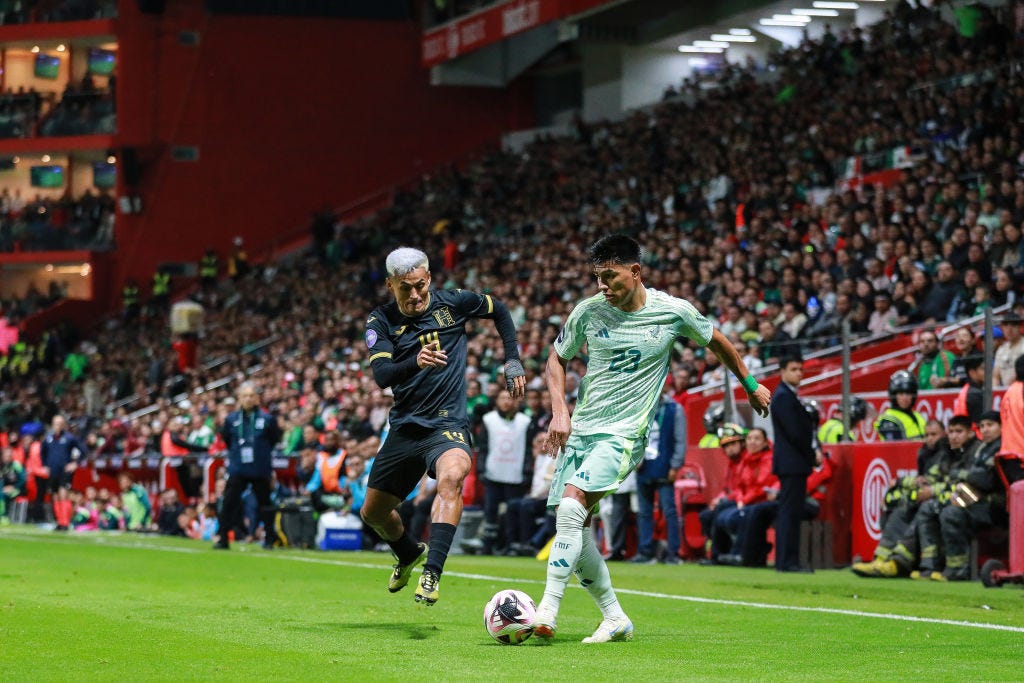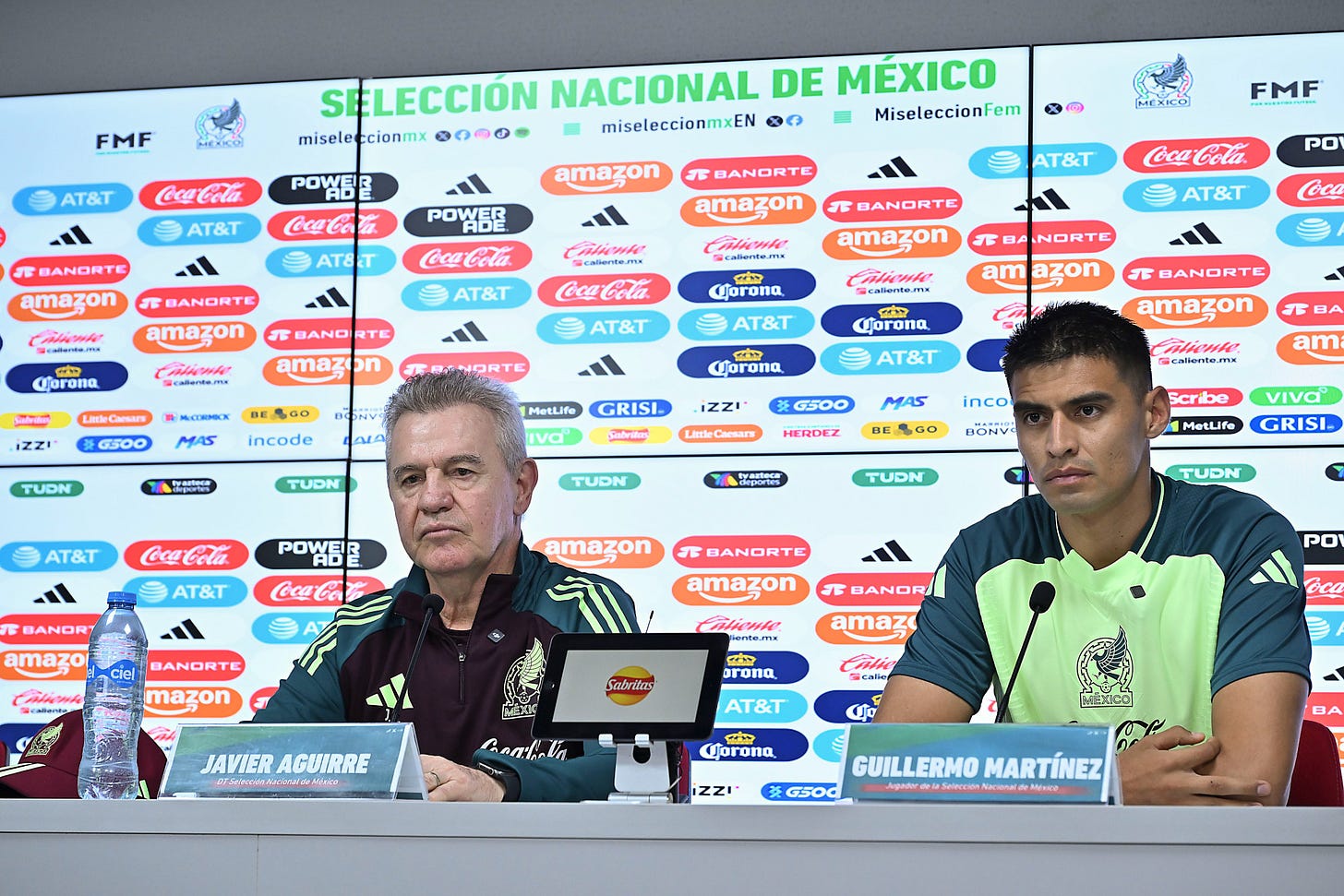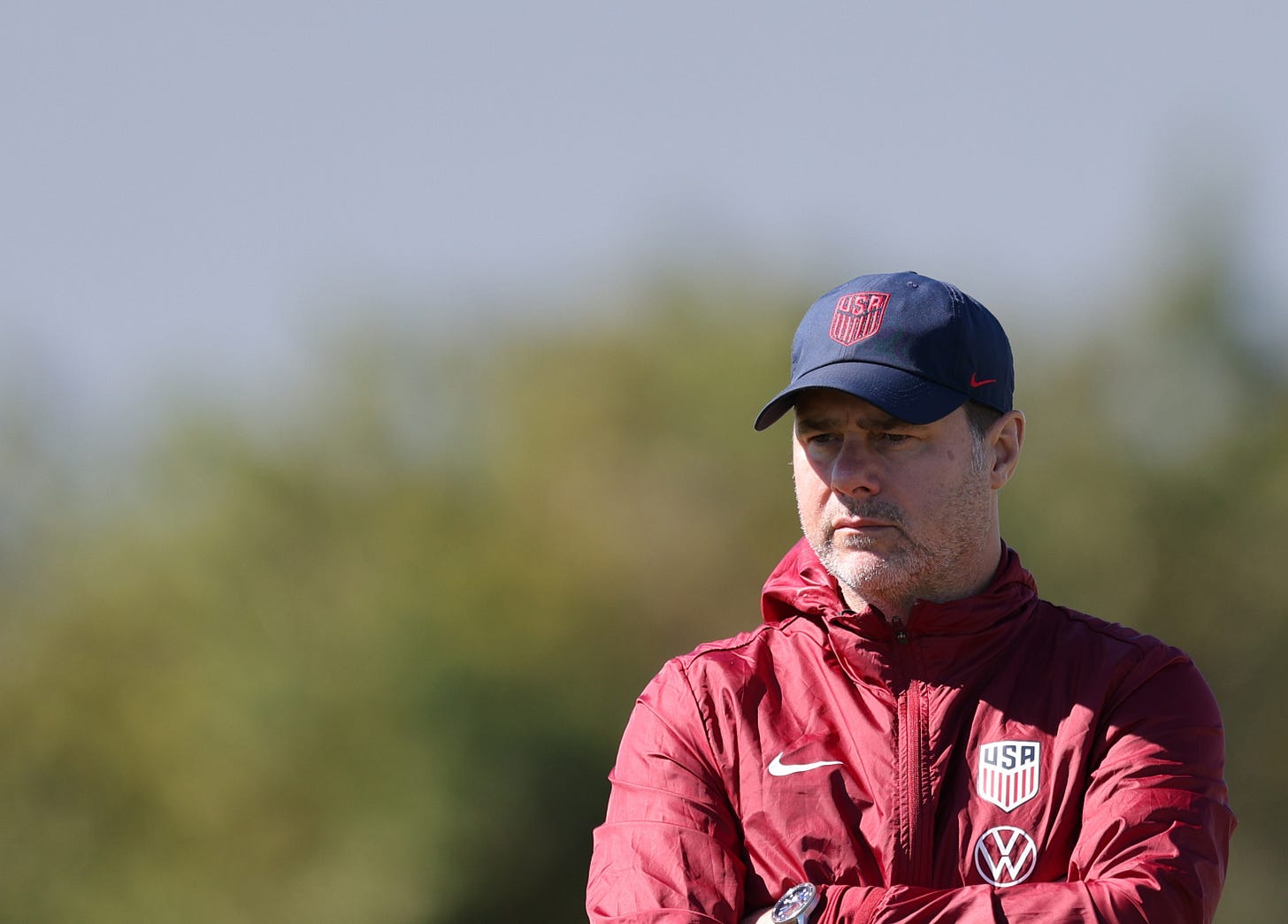🎓 What can USMNT, El Tri & Costa Rica learn from January's friendlies?
And why internationale managers love the semi-obscure matchups
Remember the Open Wide for Some Soccer bit? No, not the beloved DC-based podcast, but the one from The Simpsons where they talk about the game “Comin’ to Springfield”
The January matches definitely have a bit of that feel - from Homer groaning “Aww, I’ve never heard of those people” to the trumped up stakes required to promote matches that are fundamentally high-quality training exercises.
Mexico is on an odd tour of South America, with a roster of young players taking on Internacional tonight in Porto Alegre and River Plate in Buenos Aires on Tuesday. The U.S. meets Venezuela on Saturday and Costa Rica - led by new boss Miguel Herrera - Wednesday.
The non-sicko may be asking: Who are these people? And why are they playing?
Not only do January camps and the matches that come with them persist, they’re likely to expand. Jamaica and Trinidad and Tobago are playing a pair of friendly matches with domestic-based players in early February. Canada manager Jesse Marsch said this month that he hopes to bring players together in January 2026 to continue World Cup preparations. Other qualified teams are likely to follow suit.
International managers love these games, and while it can create strain for the federation or, in the case of Mexico, a league that is already underway they feel that it’s worth it.
Mexico manager Javier Aguirre was downright angry that more clubs didn’t release player for the matches, despite the fact that the travel and minutes mean players likely would miss two matches - or more than 10% of the Liga MX regular season (while players could technically return for Jornada 3, going 90 on two days back is not ideal).
What can national teams really learn from these matches? Well, open wide and get ready for a few of the lessons they’ll take from these games.
It only takes one
While the U.S., Mexico and Costa Rica already have the bones of the squads they’ll take to the 2026 World Cup1, coaches always look to see as many ‘fringe’ players as possible. January matches allow them to do that.
It only takes one player breaking through, either with a great performance in the match, impressive fundamentals in training or even showing something a manager didn’t know was in their tool box, for a coach to find a whole camp worth it. After all, that could be the difference between a win and crashing out of a tournament early.
“It’s a preparation game. It’s going to be very difficult for us to find a good team game. It’s going to be really difficult for us to be a dynamic team with a lot of concepts that plays good football, but I’m looking at the individual performances and their behavior,” Aguirre said Wednesday.
If he sees something from a player, be it 16-year-old Gilbert Mora or 29-year-old David Ramírez, it may be enough for a recall or at least deeper study of the player at the club level.
U.S. manager Mauricio Pochettino will feel the same, especially since his time analyzing the U.S. player pool is much shorter than Aguirre’s time with a deep knowledge of players being produced in Mexico.
After a window of friendlies and another squaring off with Jamaica, the next call-up he puts together needs to win a trophy. Expect at least a few players from this camp to make a return.
Legs and leadership
Fans hate this. Really. They hate it. Fans want to see the hot new thing, to have hope in the future. Many already have discarded these vets as washed, over the hill and of no use to the national team.
And, to be fair, you’d think Aguirre already knows everything he needs to know about 30-year-old Jesus Gallardo, who has 100 caps including a couple during Aguirre’s tenure.
Yet, Aguirre announced Gallardo as one of four starters for Thursday night, along with 29-year-old forward Guillermo “Memo” Martinez. In addition to seeing how much these players still have in their legs off a long flight and a handful of training sessions, he also can see how the players fit into an odd group - and if they emerge as the type of player worth having on the roster in part because of their locker-room presence.

The U.S., too, has veteran experience in the January camp, with center-back group Tim Ream, Walker Zimmerman and Miles Robinson plus goalkeeper Zack Steffen taking part despite having more than two-dozen caps each.
Costa Rica has just two players over 30 on their squad, compared to 13 who are 23 or younger, but Herrera will very much be in “Getting to know” mode as he works with the Costa Rican players for the first time.
Local league ammo
In many countries, there is a constant push and pull between the national team and the domestic league. At times, managers build in “micro-cycles” during the year to work with players more often. That requires buy-in from the league.
A game in January serves as a big motivation to strike a deal - though as Aguirre found out there always is wiggle room for the clubs.
While it’s a latent benefit for managers, rather than a reason to schedule a match, coming to an agreement with the club owners and league directors can help them politically position themselves.
It can work the opposite way, too. Club owners, league officials or even federation directors often pressure managers to include more players from the local league if a roster leans heavily on players earning their living abroad - especially in nations where naturalized players fill up a significant number of roster spots.
A rough performance by one or more domestic-based players in a January friendly, or by the team overall, can give a coaching staff the ammunition it needs to push back and remind local stakeholders that their job is to win and reach the team’s goals.
I hope to be in your inbox tomorrow afternoon with a feature on a player with a remarkable story participating in one of the January matches. Talk then!
Oh, tell a friend before then.
Costa Rica still must qualify






